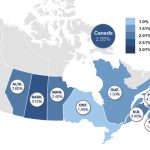
Tag Archives farmland prices

Farmland becoming less affordable: FCC

Renting land better than buying for cash flow: FCC
Each farm needs to make the decision themselves, but a bit of analysis can help when choosing

Skyrocketing pasture prices concern beef producers
Prime cattle regions saw values jump by well over a quarter

Time to protect Canadian-owned farmland
Young farmers and farmworker leaders call for ban on investor ownership of farmland

Farmland values still rising, but slower
High interest rates and already high prices are contributing to the slowdown

U.S. Lawmakers seek to limit corporate, foreign ownership of farmland
Farm groups, lawmakers are concerned that foreign, investor ownership is driving up prices and threatening national security

Interest rate boost not juicing rental prices
FCC’s latest analysis suggests the effect hasn’t hit home yet

Buy or rent? Land rent-to-price ratio can help farmers decide
FCC sees current ratios on farmland as (roughly) stable

Comment: Growing farmland inequality in Prairies a problem for all Canadians
Farmers are uneasy about the ballooning acres of investor-owned farmland, and they’re right to be

Manitoba farmland values up 11.2 per cent
Prairie provinces all show double-digit increases in farmland values


